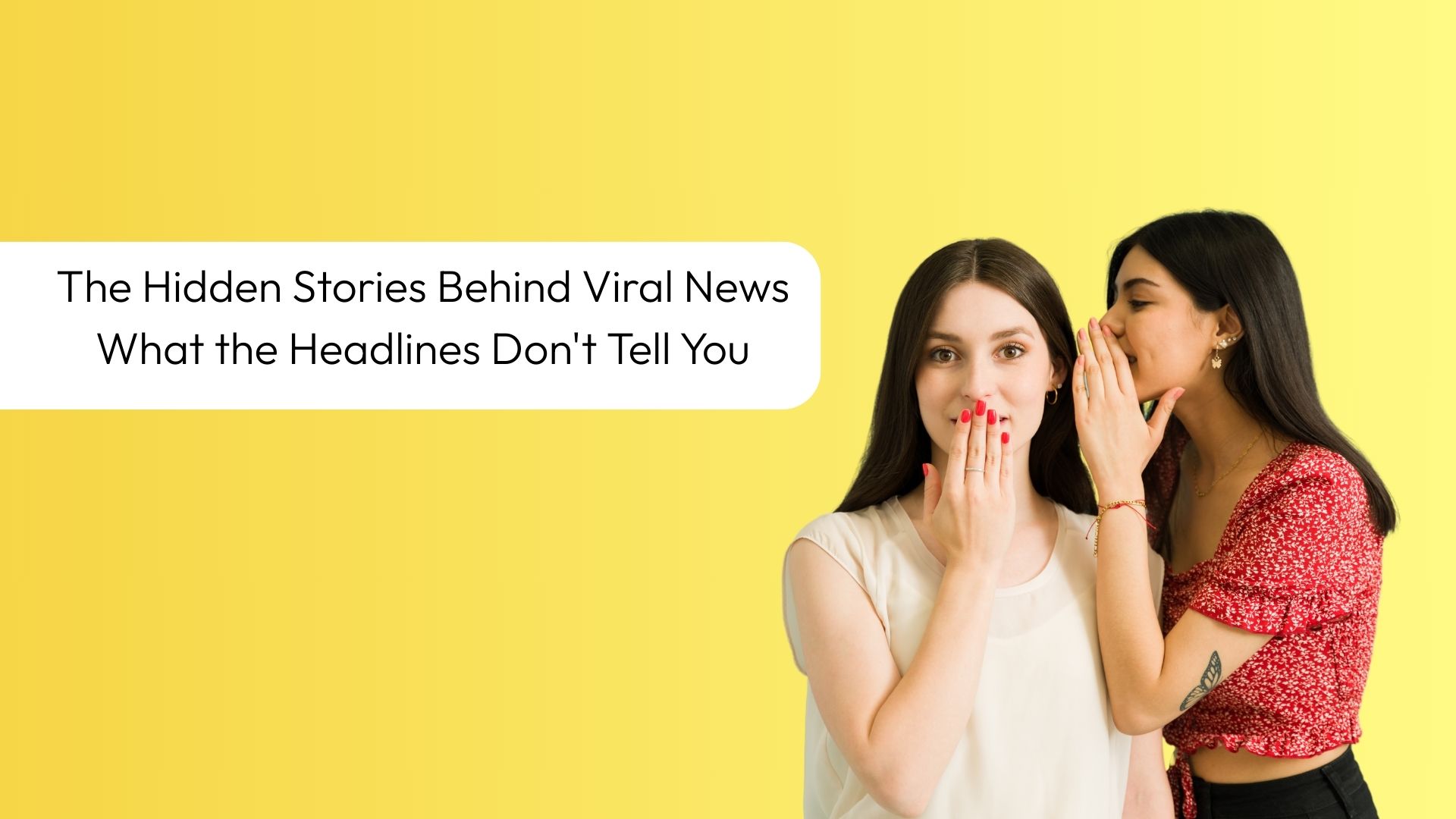Introduction
Millions of people consume viral news stories daily, often reacting instantly without digging deeper. While headlines are designed to grab attention, they rarely reveal the whole picture. Behind every trending news article lies a deeper story, influenced by agenda-driven narratives, media biases, and missing context.
This article explores the hidden layers behind viral news, revealing how headlines shape public perception and why critical thinking is more important than ever in today’s digital age.
1. The Art of Sensationalism: Why Headlines Are Designed to Mislead
Media outlets rely on engagement, and clickbait headlines are a proven strategy to boost views and shares. However, they often:
- Exaggerate or distort facts to make a story more dramatic.
- Omit crucial context that changes the meaning of the news.
- Use emotionally charged words to provoke a reaction rather than inform.
For example, a headline like “Tech Giant Lays Off 10,000 Workers!” might sound alarming, but the whole story could reveal that these layoffs are part of a routine restructuring. The company is hiring in other departments.
2. The Role of Algorithms in Shaping News Trends
What goes viral is often not just about what’s important but what’s profitable for social media platforms. Algorithms prioritize:
✅ Emotional content – Anger, fear, and outrage drive more engagement.
✅ Echo chamber reinforcement – Platforms show stories aligning with your beliefs.
✅ Sensationalized and polarizing stories – More division = more comments, shares, and ad revenue.
As a result, fact-based, nuanced discussions struggle to gain visibility, while extreme takes dominate online conversations.
3. Who Controls the Narrative? Media Bias & Political Agendas
Media houses are not neutral entities; political affiliations, corporate interests, and government pressures often influence them.
- Some stories favor a political ideology while downplaying opposing views.
- Advertisers and corporate sponsors can influence what gets covered (or ignored).
- Governments and institutions may use news channels for strategic messaging.
A single event can have multiple interpretations, depending on which source is reporting it. Reading from diverse sources is crucial to getting the whole picture.
4. The Power of Misinformation and Fake News
The rapid spread of fake news and manipulated information has made it harder to differentiate between real journalism and propaganda.
🚨 Deepfakes – AI-generated videos that mimic real people, making it easy to fabricate statements.
🚨 Out-of-context images – Old photos or videos repurposed to fit new narratives.
🚨 Misleading statistics – Numbers taken out of context to support a biased viewpoint.
Always fact-check news with reliable sources before believing or sharing.
5. The Psychological Impact of Viral News
Constant exposure to harmful, fear-inducing news has profound psychological effects:
- Doomscrolling – The habit of endlessly consuming lousy news, leading to anxiety and stress.
- Confirmation bias – Seeking out news that reinforces our beliefs rather than challenges them.
- Outrage culture – Instant emotional reactions based on incomplete information, often leading to online conflicts.
Taking breaks from the news cycle and critically analyzing stories can help maintain a balanced perspective.
6. How to Read the News Like a Journalist
To avoid being misled by viral stories, follow these steps:
🔹 Check multiple sources – Compare how different outlets report the same event.
🔹 Look for sources – Read full reports and direct statements instead of relying on summaries.
🔹 Verify facts – Use fact-checking websites like Snopes or Reuters Fact Check.
🔹 Understand media ownership – Be aware of who funds a news outlet and their potential biases.
🔹 Question emotional triggers – If a story makes you angry or fearful, ask why. Is it factual, or is it designed to provoke a reaction?
Conclusion
Viral news is designed to capture attention, not always to inform. While headlines shape public perception, they often hide more profound truths. By practicing critical thinking, verifying facts, and reading beyond the headlines, we can navigate the modern news landscape more intelligently and responsibly.
The next time you see a viral headline, pause and ask: What’s the hidden story behind this?

